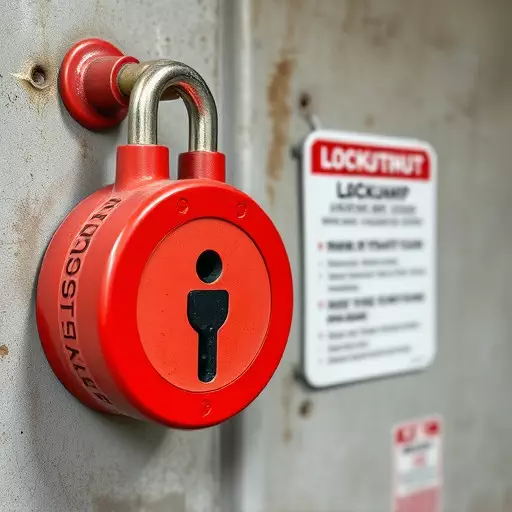The article emphasizes the critical importance of Lockout/Tagout (L/T) procedures for worker safety during machinery maintenance, aligning with OSHA standards. A robust L/T program includes compliant procedures, employee training, and meticulous documentation. Key focus areas are program development, OSHA standards adherence, and comprehensive training to prevent accidental activation, fostering a culture of workplace safety and preventing injuries or fatalities. Machine guarding practices complement these efforts, with regular training ensuring employees understand the significance of isolating machinery before maintenance.
In the manufacturing and industrial sectors, ensuring worker safety near machinery is paramount. Two critical methods for achieving this are Lockout/Tagout (L/T) and machine guarding. This article explores these essential practices in depth. We begin by delving into the understanding of L/T: OSHA standards and their significance, highlighting the importance of proper program development and training. Subsequently, we examine the complementary role of machine guarding in safety protocols, offering a comprehensive guide to creating an effective L/T program.
- Understanding Lockout/Tagout: OSHA Standards and Their Significance
- Developing an Effective Lockout Tagout Program: Key Components
- The Role of Machine Guarding in Safety Protocols
Understanding Lockout/Tagout: OSHA Standards and Their Significance

Understanding Lockout/Tagout: OSHA Standards and Their Significance
Lockout/tagout (L/T) is a critical safety practice designed to prevent accidental activation of machinery during maintenance or repair activities. This process involves securing energy sources, including electrical, hydraulic, pneumatic, and mechanical power, to ensure workers are protected from harm. The Occupational Safety and Health Administration (OSHA) sets the standard for L/T procedures through its lockout tagout standards, which are crucial in preventing workplace injuries and fatalities related to machinery accidents.
The development of a robust lockout tagout program involves implementing OSHA-compliant procedures, providing comprehensive training programs for employees, and maintaining thorough documentation. These training programs educate workers on the proper use of lockouts and tags, ensuring they understand their responsibilities in maintaining machine safety during downtime. Adhering to these standards is not just regulatory compliance; it’s a vital step towards fostering a culture of workplace safety and preventing disastrous incidents.
Developing an Effective Lockout Tagout Program: Key Components

Developing a robust lockout tagout program is essential for maintaining workplace safety, particularly when dealing with hazardous machinery. The process involves several key components as outlined by the OSHA lockout tagout standards. Firstly, conducting thorough risk assessments to identify potential hazards and vulnerable points in equipment operation. This step ensures that all possible risks are addressed and mitigated.
Secondly, implementing clear and consistent procedures for locking out and tagging machines is crucial. These procedures should be well-documented and easily accessible to all employees. Regular lockout tagout training programs play a significant role in educating workers about the importance of these protocols, proper techniques, and potential consequences of non-compliance. Such training fosters a safety culture where every employee takes responsibility for preventing accidental machinery activation during maintenance or repairs.
The Role of Machine Guarding in Safety Protocols

Machine guarding plays a pivotal role in comprehensive safety protocols within industrial settings. It involves designing and implementing physical barriers to protect workers from potential hazards associated with machinery. These guards act as a crucial line of defense, preventing accidental contact with moving parts, reducing the risk of injuries, and ensuring a safer workspace. By employing machine guarding strategies, organizations can significantly minimize exposure to dangerous conditions during maintenance or operation.
The development of an effective lockout tagout program is inherently linked to machine guarding practices. OSHA’s lockout tagout standards emphasize the necessity of such measures to safeguard employees. Lockout tagout training programs educate workers on proper procedures, ensuring they understand the importance of isolating machinery before conducting any maintenance or repair work. This proactive approach fosters a safety culture, empowering employees to actively contribute to their well-being and that of their colleagues.


